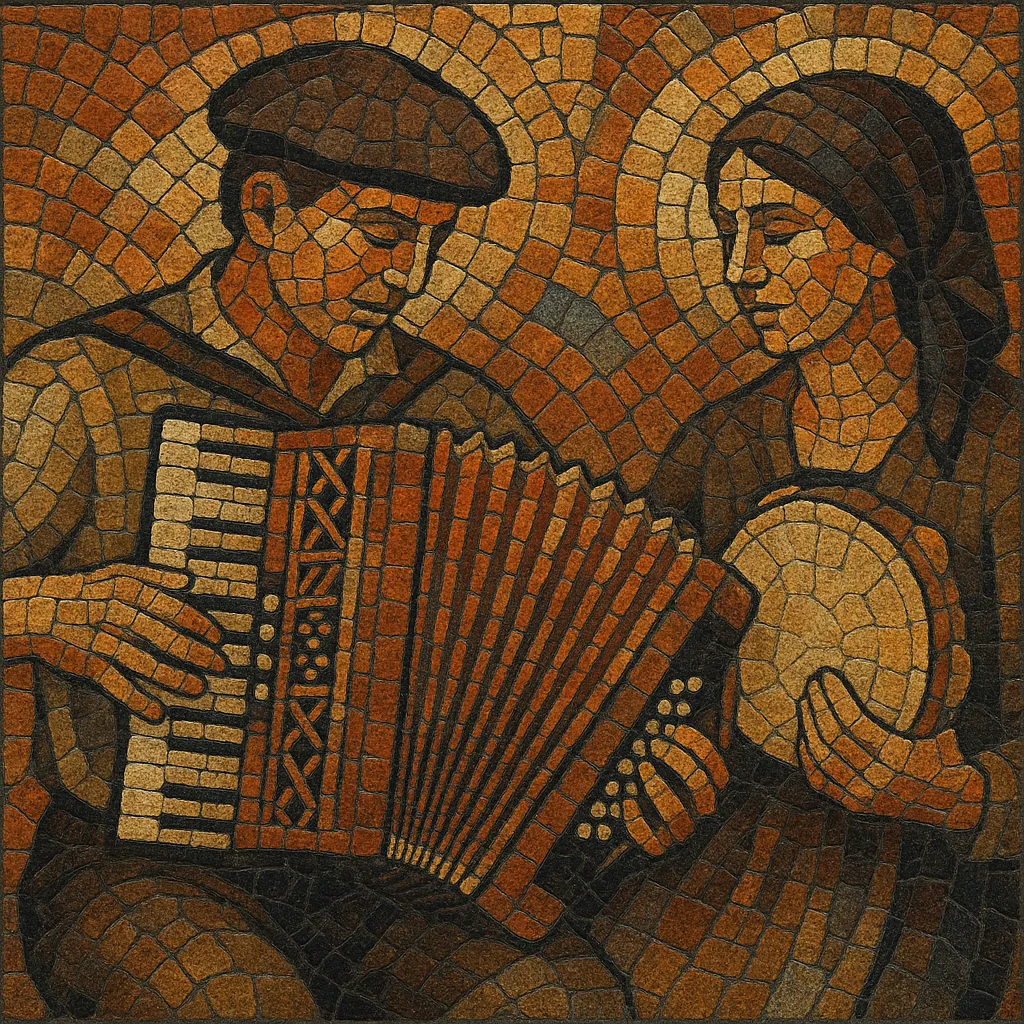Trikitixa (also called trikiti) is the Basque tradition of diatonic button accordion music, most often performed as a lively duo of accordion and tambourine. The style centers on driving dance rhythms, bright major-mode melodies, and virtuosic right-hand ornamentation.
Typical trikitixa sets pair a stately Basque fandango with a faster arin-arin, moving from triple to duple feel in a single seamless flow. The music is communal and participatory, designed for social dancing and festive gatherings, yet it has also evolved into concert and studio settings through modern arrangers and ensembles.
The trikitixa tradition arose in the Basque Country in the late 1800s with the arrival of the two-row diatonic button accordion from neighboring European regions. Local musicians adapted the instrument to existing Basque dance repertories, especially the fandango and arin-arin, fusing Central/Western European couple-dance influences (polka, schottische, waltz, mazurka) with indigenous Basque aesthetics and performance practices.
By the early 20th century, trikitixa duos—accordionist and tambourine player—became fixtures at village festivities, romerías, and dance halls. The idiom emphasized rhythmic propulsion, catchy melodic hooks, and call-and-response patterns suited to participatory dance.
From the 1980s onward, a new generation of players systematized technique, expanded repertoire, and brought the style to national and international stages. Recordings, competitions, and teaching institutions helped standardize fingering, ornamentation, and accompaniment patterns. Artists began blending trikitixa with pop, rock, and world-music arrangements, giving rise to a "triki-pop" wave that placed the instrument at the center of contemporary Basque popular music.
Modern trikitixa thrives in both traditional and innovative contexts. Conservatories and local schools train new players; festival circuits and touring ensembles showcase the instrument globally. Studio productions now feature trikitixa alongside bass, drums, strings, and vocal harmonies, while the core duo format remains vital for dance-centered community events.


